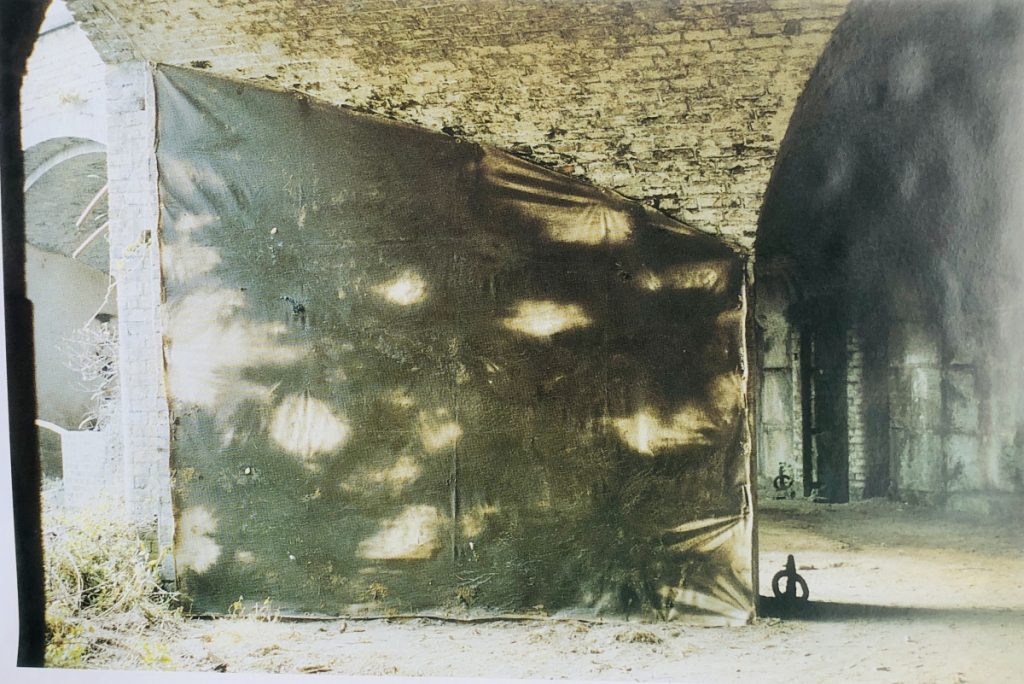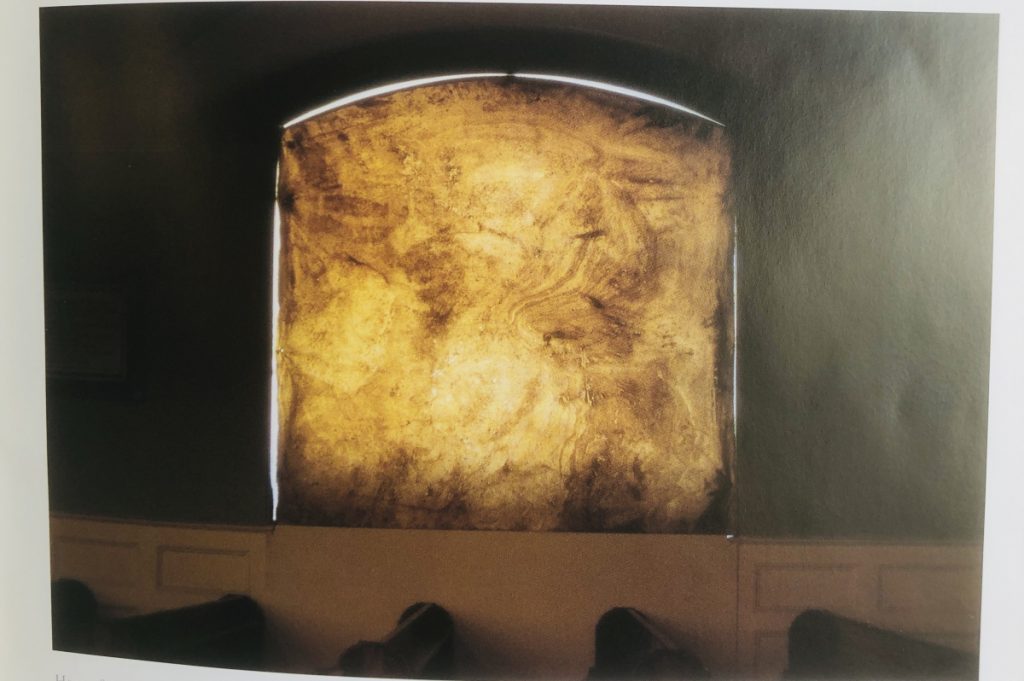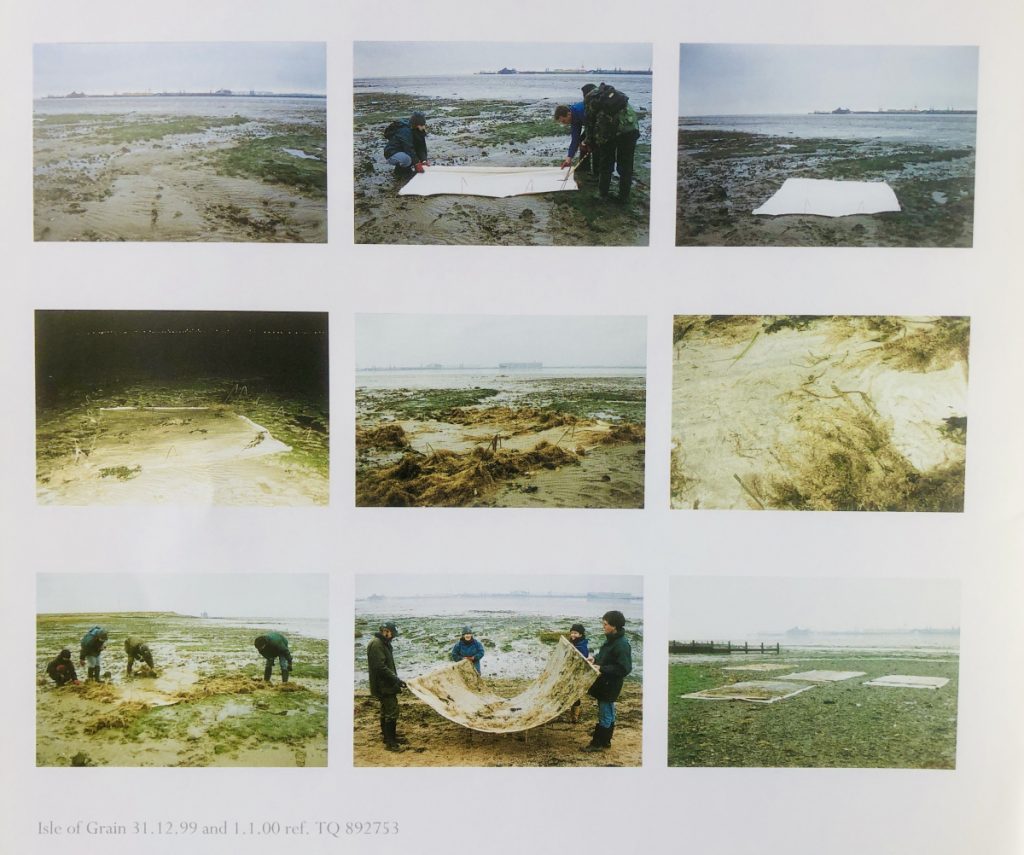Artist Stephen Turner was kind enough to send me some literature about his work. Turner is an artist and environmentalist who creates site-specific work mostly using natural materials. An important part of his work is spending time in solitary confinement in the landscape to get fully immersed in the process of creation. His work is both physically and psychologically demanding which I find interesting as it’s not necessarily about audience engagement (though this is a large component) rather it’s about the artist having his own experience and feeling the forces and challenges of the natural environment he works in.
Turner sees himself as less of an artist and more of an archaeologist or local historian and I see parallels here in how my own research has embraced the history and geography of the landscape, but I do question how any authentic land artwork could ignore these elements. Some of his estuary canvases (that were left to be formed by the tide) are like amorphous shrouds and these were given an ethereal power when they were displayed in a church. Significantly, Turner took this work out of the environment and into a formal ‘gallery’ space. This makes me consider how I might display my own work, as after it has been site specific I may display it in the exhibition. I’ve yet to consider what form this would take but an important part of the design would be to consider this potential.
His work is relevant in that it tries to predict probabilities but not anticipate results. I like this analysis as it’s exactly what I’m trying to achieve on the river; I’m trying to create a framework with rules but then leave nature to create results. Like Turner, I’m focussing on one slice of nature and showing how much richness it contains, but it is nature that is exposing this richness not my own hand.
Turner talks about how he finds the hidden forces which pervade everything, which I appreciate. He is also concerned that we live so badly with nature and how we are alienated from the natural rhythms and laws. I hope that by creating a simple device that shows the beauty in natural rhythms I can create a wonder that helps partially fix this. My work will be different from Turner’s as mine will be kinetic; Turner displays the end result of the forces of nature but I will show nature in action.
Turner also mentions that he is inspired by the words of psychoanalyst Adam Phillips who wrote the words below in one of his publications. This idea explores how man is the only animal that gives itself to sorrow and mourning. I remember from my study of Nietzsche how he was also amused how other animals must look at humans with bafflement “as the mad animal, as the laughing animal, as the weeping animal, as the unhappy animal”. Turner seems interested in how nature is not enough for us and how we seem to think that nature is not on our side when in reality nature doesn’t take sides, only we do.
So there is the element of connectivity to nature to consider as well in my own work. Maybe the best illustration of connectivity is to ensure all aspects of my work are cleverly intertwined themselves. This could come through in all the choices I make about the words on the paddles, the materials, the location, the entire structure. Standing back regularly to see how all aspects are interrelating will be important to maintain these relationships.
“When transience is not merely an occasion for mourning, we will have inherited the earth.”
– Adam Phillips



